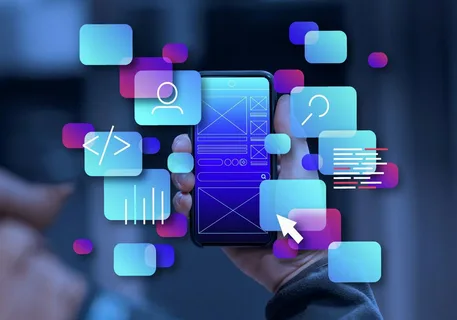
In the rapidly evolving digital landscape, the creation of successful applications extends far beyond mere lines of code. While technical prowess remains fundamental, the true differentiator for any digital product lies in its ability to deeply resonate with its users. This paradigm shift underscores the profound importance of user-centric design, transforming how we approach software development and ultimately define product excellence.
For too long, the focus in app development was predominantly on functionality and technical specifications. Developers would meticulously craft features, often assuming they knew what users needed. However, this approach frequently led to products that, while technically sound, struggled to gain traction or provide genuine value, resulting in frustration for both creators and end-users alike.
The modern user is discerning and expects an intuitive, seamless, and delightful experience. They are no longer content with just a working application; they demand one that anticipates their needs, simplifies complex tasks, and feels natural to interact with. This elevated expectation has pushed user experience (UX) to the forefront, making it an indispensable component of any successful app strategy.
Adopting a user-centric design philosophy means placing the user at the very heart of the development process. It involves understanding their motivations, behaviors, and pain points, then meticulously crafting solutions that address these elements directly. This holistic approach ensures that every design decision, every feature, and every interaction serves a clear purpose from the user's perspective.
Companies that embrace this philosophy often see significant returns in user satisfaction, retention, and overall product longevity. It’s not just about making an app look good; it’s about making it inherently useful, accessible, and enjoyable. Pixlwisemast firmly believes that this foundational principle is the cornerstone of creating truly impactful digital solutions that stand the test of time and market dynamics.
By prioritizing the user, organizations can move beyond simply building software to creating experiences that foster loyalty and advocacy. This strategic shift minimizes the risk of developing features that go unused and instead focuses resources on elements that genuinely enhance the user's journey, leading to a more efficient and effective development cycle.
Key Applications and Considerations
-
Mobile Applications: User-centric design is paramount for mobile apps, where screen real estate is limited and user attention spans are short. Pros include higher user engagement and intuitive navigation; limitations can arise from diverse device fragmentation and varying user contexts.
-
Web Platforms and Services: For web-based solutions, a user-first approach ensures accessibility and ease of use across different browsers and devices. Benefits include enhanced user journeys and reduced support queries; challenges often involve managing complex information architectures and evolving web standards.
-
Enterprise Software: Even within specialized internal tools, user-centricity improves employee productivity and reduces training overhead. Advantages include streamlined workflows and increased operational efficiency; a common limitation is balancing specific departmental needs with broader organizational requirements.
The Methodologies and Debates
Implementing user-centric design isn't a single step but an iterative process deeply rooted in continuous learning and refinement. It typically begins with extensive user research, involving interviews, surveys, and observational studies to gather deep insights into target audiences. This initial phase is crucial for building accurate user personas and understanding their real-world scenarios and challenges.
Following research, the design phase often involves sketching, wireframing, and prototyping, allowing ideas to be visualized and tested rapidly without extensive code development. This iterative cycle of design, testing, and feedback is vital. It enables teams to identify usability issues early, make necessary adjustments, and validate concepts directly with potential users, significantly reducing rework later in the development pipeline.
One common debate within the field revolves around the balance between user desires and technical feasibility. While users might express a need for a specific feature, its implementation could be excessively complex or resource-intensive. Expert designers must skillfully navigate this tension, finding creative solutions that meet user needs while remaining within practical constraints, often requiring innovative problem-solving.
Another area of discussion centers on the integration of UX within agile development frameworks. Some argue that extensive upfront user research can slow down agile sprints, advocating for just-in-time UX. Others contend that a solid foundational understanding of users is non-negotiable and should precede development cycles to ensure that the right problems are being addressed from the outset. Pixlwisemast emphasizes a balanced approach, integrating UX seamlessly into iterative development.
The role of the UX professional has also expanded significantly. Beyond creating aesthetically pleasing interfaces, they are now strategic thinkers, bridging the gap between user needs, technical capabilities, and organizational objectives. Their expertise is critical in advocating for the user throughout the entire product lifecycle, ensuring that the user's voice is heard and acted upon at every stage of development.
Final Observations and Recommendations
Ultimately, moving beyond code to embrace user-centric app design is no longer an optional enhancement but a fundamental requirement for creating successful digital products. It represents a commitment to understanding and serving the people who will interact with your creations, leading to applications that are not only functional but also deeply valued and consistently used.
Organizations that invest in robust user research, iterative design processes, and continuous feedback loops position themselves for sustained success. By making the user experience a core pillar of their strategy, they foster stronger connections with their audience and build products that genuinely solve problems and enrich daily lives. This forward-thinking approach is key to thriving in today's competitive landscape.




Thanu Chawalitchat
This article perfectly articulates the shift in focus needed for modern app development. It's refreshing to see the emphasis on understanding user behavior as the true foundation for success. Great insights!
Thank you for your kind words! We truly believe that user understanding is paramount, and we're glad this perspective resonates with you.
Jutharat Chawalitchat
While the importance of user-centric design is clear, I wonder about the practical challenges for smaller teams with limited resources. How can they effectively implement all these steps without significant overhead?
That's a very valid point. For smaller teams, prioritizing key research methods and iterative testing on critical features can be highly effective. Focusing on high-impact areas first helps manage resources while still delivering value.
Phuwanrakthon Thanamongkol
The discussion on balancing user desires with technical feasibility is particularly insightful. It highlights a common dilemma and the need for skilled UX professionals to navigate it. Excellent read!
We appreciate your feedback! Navigating that balance is indeed one of the most challenging yet rewarding aspects of design, and it underscores the strategic value of experienced UX leadership.